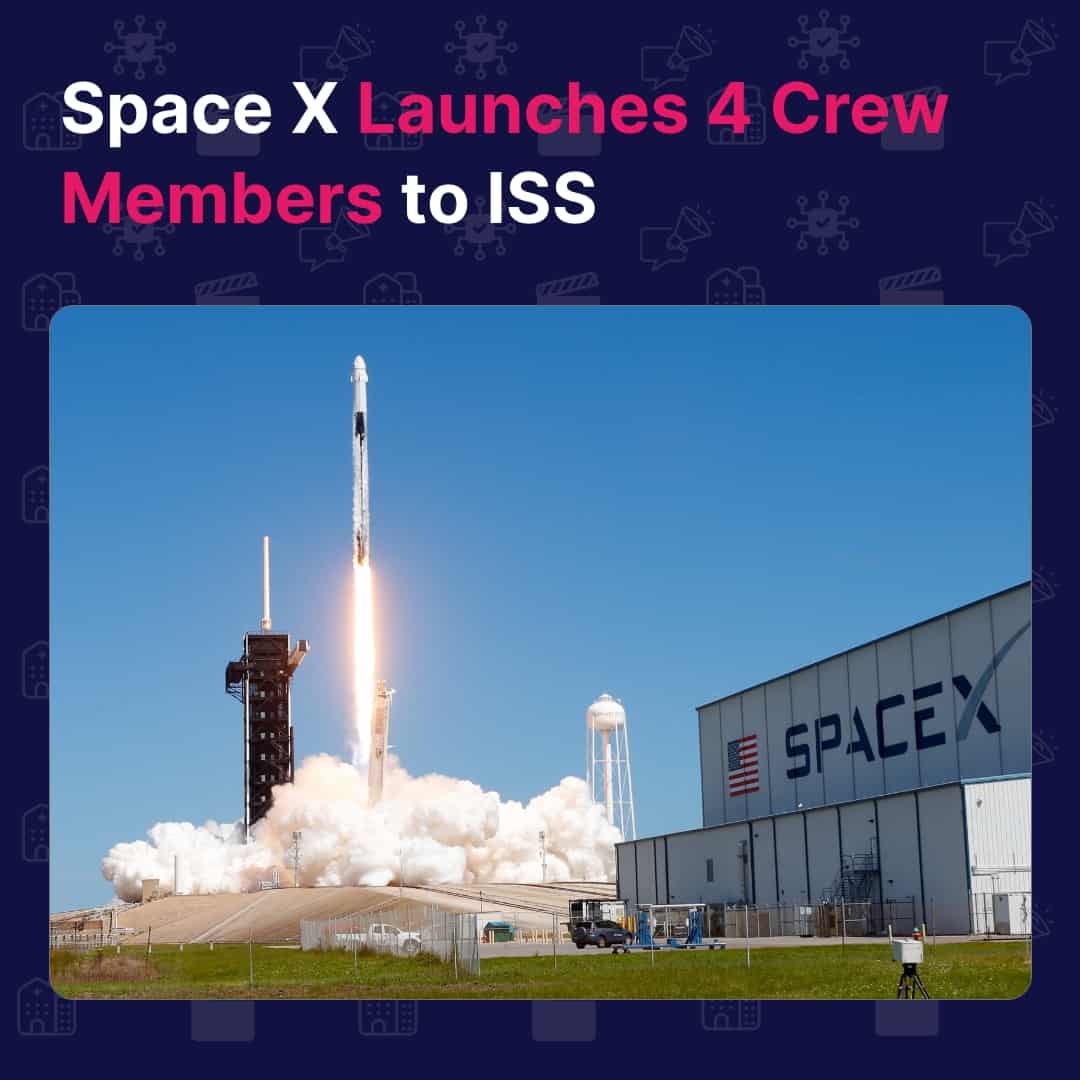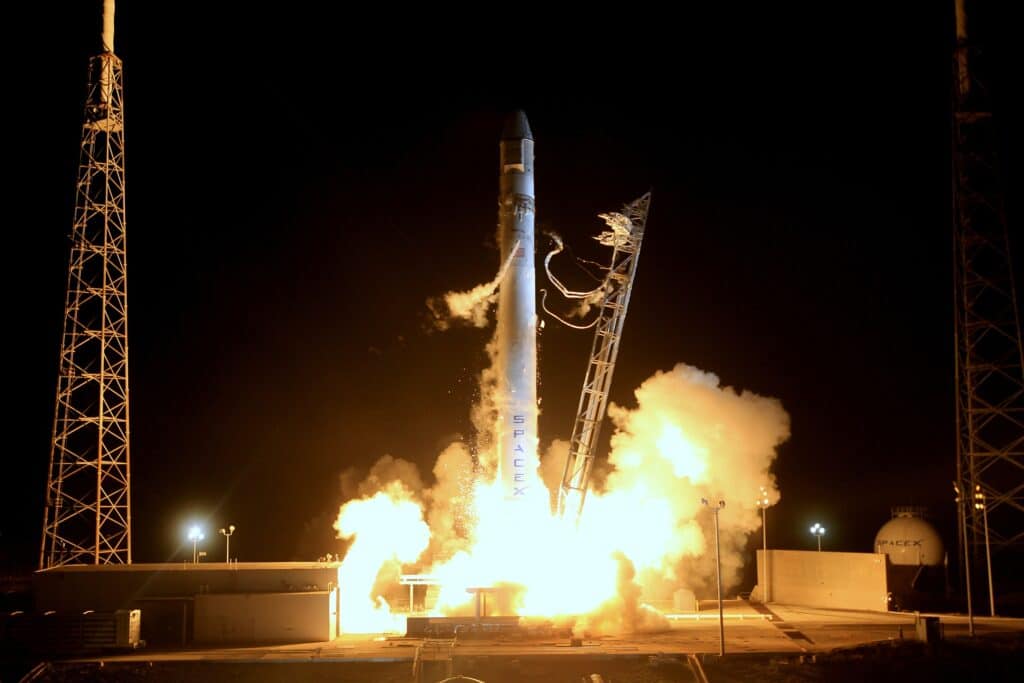
At 12:34 a.m. EST (05:34 GMT), the SpaceX launch vehicle, which consists of a Falcon 9 rocket topped with an autonomously flown Crew Dragon capsule dubbed Endeavour, blasted out from NASA's Kennedy Space Center in Cape Canaveral, Florida.
SpaceX, Elon Musk's rocket company, sent four people into orbit early on Thursday morning, two astronauts from NASA and one each from the Russian Federation and the United Arab Emirates.
At 12:34 a.m. EST (05:34 GMT), the SpaceX launch vehicle blasted off from NASA's Kennedy Space Center in Cape Canaveral, Florida. The Falcon 9 rocket was topped with a Crew Dragon capsule dubbed Endeavour, which was operated autonomously.

The 25-story spacecraft was broadcast live by NASA as it ascended the launch tower, its nine Merlin engines spewing billowing clouds of vapor and illuminating the predawn sky in a scarlet inferno.
A bottleneck in the flow of engine-ignition fluid forced the cancellation of the first launch attempt in the last minutes of the countdown early on Monday morning, thus the flight happened 72 hours later. According to NASA, the issue has been resolved by replacing the blocked filter and flushing the system.
The Crew Dragon was sent into a preliminary orbit by the rocket's upper stage nine minutes after liftoff on Thursday, while traveling at more than twenty times the speed of sound. Meanwhile, the reusable Falcon booster's lower stage flew itself down to Earth and landed safely on a recovery vessel named "Just Follow the Instructions" in the Atlantic.
SpaceX's mission control manager was overheard playfully telling the astronauts to rate their experience out of five stars shortly after the spacecraft entered orbit.
NASA astronaut Stephen Bowen, the crew's commander, radioed back, "We'd like to thank you for the fantastic voyage to orbit today."
With a targeted arrival time of 1:15 a.m. EST (06:15 GMT) on Friday, the trek to the International Space Station (ISS), a laboratory orbiting approximately 250 miles (420 km) above Earth, was expected to take about 25 hours.
Disclosure: Some of the links in this article may be affiliate links, which can provide compensation to me at no cost to you if you decide to purchase a paid plan. These are products I’ve personally used and stand behind. This site is not intended to provide financial advice and is for entertainment only. You can read our affiliate disclosure in our privacy policy.